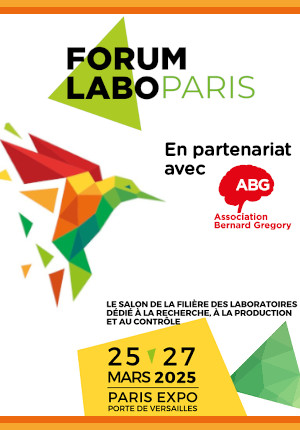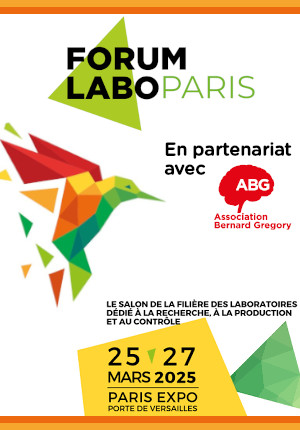Origine de l'azote dans le système solaire et sur la Terre primitive : ammonium, nitrate et matière organique dans les chondrites carbonées et les échantillons astéroïdaux retournés sur Terre // Origin of nitrogen in the solar system and on primitive Eart
|
ABG-128826
ADUM-62026 |
Sujet de Thèse | |
| 22/02/2025 | Contrat doctoral |
Université Grenoble Alpes
Saint Martin d'Hères - France
Origine de l'azote dans le système solaire et sur la Terre primitive : ammonium, nitrate et matière organique dans les chondrites carbonées et les échantillons astéroïdaux retournés sur Terre // Origin of nitrogen in the solar system and on primitive Eart
- Terre, univers, espace
isotopes, azote, système solaire, planétésimaux, météorites, astéroïdes
isotopes, nitrogen, solar system, planetesimals, meteorites, asteroids
isotopes, nitrogen, solar system, planetesimals, meteorites, asteroids
Description du sujet
L'incorporation et l'évolution de l'azote depuis les environnements pré-stellaires jusqu'à la formation du système solaire, sa répartition au sein des différents corps du système solaire, et notamment l'origine de l'azote terrestre, sont très mal compris. Comment l'azote a-t-il été apporté lors de la formation et de la jeunesse des planètes par les planétésimaux dont les comètes et astéroïdes sont les reliques, sous quelle(s) forme(s) était cet azote ? Des découvertes récentes suggèrent que ces objets auraient pu y délivrer une quantité significative d'azote sous forme d'ammonium (NH4+, présent dans des sels, phyllosilicates, ou grains organiques). Or, très peu d'études ont recherché l'ammonium dans les chondrites carbonées, les météorites les plus riches en éléments légers et ayant des compositions élémentaires les plus proches du Soleil, donc les plus primitives du point de vue de la composition élémentaire. Pour améliorer notre compréhension de l'origine et de l'évolution de l'azote lors de la formation du système solaire, et des parentés entre météorites et petits corps, il est important d'étudier la présence, la quantité et l'origine de l'ammonium contenu dans ces chondrites carbonées. Entre 2021 et 2024, un travail de thèse, réalisé grâce à une collaboration transdisciplinaire entre l'IPAG et l'IGE à Grenoble, a permis de quantifier l'ammonium et de caractériser son rapport isotopique 14N/15N dans différentes chondrites carbonées CI, CR, CM, C2-ung, obtenant plusieurs résultats prometteurs. Nous souhaitons poursuivre ces travaux avec une nouvelle thèse, visant à analyser non seulement des chondrites carbonées mais aussi des échantillons astéroïdaux retournés sur Terre, en particulier ceux de Bennu. L'aspect novateur de ces analyses est d'établir le bilan de l'azote dans les chondrites carbonées et les échantillons retournés, c'est-à-dire la contribution de chaque phase azotée à l'azote total. De plus, les mesures du rapport 14N/15N de NH4+, NO3- ainsi que des molécules organiques solubles et insolubles révèlent les origines, évolutions, et éventuelles parentés de ces différentes phases porteuses d'azote.
Cette thèse aura pour objectifs (1) de contraindre plus précisément l'abondance, l'origine et la composition isotopique de l'azote des ions NH4+ et NO3- extraits des chondrites carbonées (CI, CM, CR, C2-ung), (2) de déterminer le bilan de distribution de l'azote au sein de ces chondrites carbonées en établissant un protocole expérimental permettant d'extraire successivement les phases porteuses de l'azote (NH4+, NO3-, molécules organiques solubles et insolubles) sur un même échantillon, puis (3) de réduire la masse nécessaire pour permettre l'analyse d'échantillons de l'astéroïde Bennu.
Les extractions des phases porteuses de l'azote par broyage, lessivage, éventuellement gel-dégel, ainsi que les analyses élémentaires et isotopiques de l'azote total et de l'azote des phases organiques par spectrométrie de masse à rapport isotopique seront effectuées à l'IPAG. Les analyses de l'abondance et de la composition isotopique de l'azote de NH4+ et NO3- seront effectuées par chromatographie ionique et spectrométrie de masse à l'IGE.
------------------------------------------------------------------------------------------------------------------------------------------------------------------------
------------------------------------------------------------------------------------------------------------------------------------------------------------------------
The incorporation and evolution of nitrogen from pre-stellar environments to the formation of the Solar system, its distribution within the various bodies of the Solar system, and in particular the origin of terrestrial nitrogen, are very poorly understood. How was nitrogen incorporated to planets by planetesimals, whose relics today are comets and asteroids, in what form(s) was this nitrogen? Recent discoveries suggest that these objects may have delivered a significant quantity of nitrogen in the form of ammonium (NH4+, in the forms of salts, phyllosilicates or organic grains). Yet very few studies have looked for ammonium in carbonaceous chondrites, the most volatile-rich meteorites, having the closest composition to the Sun. To improve our understanding of the origin and evolution of nitrogen during the formation of the Solar system, and of the relationship between meteorites and small bodies, it is important to study the presence, quantity and origin of the ammonium contained in these carbonaceous chondrites. Between 2021 and 2024, a PhD thesis, carried out thanks to a transdisciplinary collaboration between IPAG and IGE in Grenoble, quantified ammonium and characterized its 14N/15N isotopic ratio in different carbonaceous chondrites CI, CR, CM, C2-ung, obtaining several promising results. We plan to continue this work with a new thesis, aimed at analyzing not only carbonaceous chondrites but also asteroidal samples returned to Earth, in particular those from Bennu. The innovative aspect of these analyses is to establish the nitrogen balance in carbonaceous chondrites and returned samples, i.e. the contribution of each nitrogen phase to total nitrogen. In addition, measurements of the 14N/15N ratio of NH4+, NO3- and soluble and insoluble organic molecules reveal the origins, evolution and possible genetic-link of these different nitrogen-bearing phases.
The aims of this thesis are (1) to constrain more precisely the abundance, origin and nitrogen isotopic composition of NH4+ and NO3- ions extracted from carbonaceous chondrites (CI, CM, CR, C2-ung), (2) determine the nitrogen distribution balance within these carbonaceous chondrites by establishing an experimental protocol for successively extracting the nitrogen-bearing phases (NH4+, NO3-, soluble and insoluble organic molecules) from the same sample, and then (3) reduce the mass required to enable analysis of samples from the asteroid Bennu.
Extraction of nitrogen-bearing phases by grinding, leaching and, if necessary, freeze-thawing, as well as elemental and isotopic analysis of total nitrogen and nitrogen in organic phases by isotope ratio mass spectrometry, will be carried out at IPAG. Analyses of the abundance and nitrogen isotopic composition of NH4+ and NO3- will be carried out by ion chromatography-mass spectrometry at the IGE.
------------------------------------------------------------------------------------------------------------------------------------------------------------------------
------------------------------------------------------------------------------------------------------------------------------------------------------------------------
Début de la thèse : 01/10/2025
Cette thèse aura pour objectifs (1) de contraindre plus précisément l'abondance, l'origine et la composition isotopique de l'azote des ions NH4+ et NO3- extraits des chondrites carbonées (CI, CM, CR, C2-ung), (2) de déterminer le bilan de distribution de l'azote au sein de ces chondrites carbonées en établissant un protocole expérimental permettant d'extraire successivement les phases porteuses de l'azote (NH4+, NO3-, molécules organiques solubles et insolubles) sur un même échantillon, puis (3) de réduire la masse nécessaire pour permettre l'analyse d'échantillons de l'astéroïde Bennu.
Les extractions des phases porteuses de l'azote par broyage, lessivage, éventuellement gel-dégel, ainsi que les analyses élémentaires et isotopiques de l'azote total et de l'azote des phases organiques par spectrométrie de masse à rapport isotopique seront effectuées à l'IPAG. Les analyses de l'abondance et de la composition isotopique de l'azote de NH4+ et NO3- seront effectuées par chromatographie ionique et spectrométrie de masse à l'IGE.
------------------------------------------------------------------------------------------------------------------------------------------------------------------------
------------------------------------------------------------------------------------------------------------------------------------------------------------------------
The incorporation and evolution of nitrogen from pre-stellar environments to the formation of the Solar system, its distribution within the various bodies of the Solar system, and in particular the origin of terrestrial nitrogen, are very poorly understood. How was nitrogen incorporated to planets by planetesimals, whose relics today are comets and asteroids, in what form(s) was this nitrogen? Recent discoveries suggest that these objects may have delivered a significant quantity of nitrogen in the form of ammonium (NH4+, in the forms of salts, phyllosilicates or organic grains). Yet very few studies have looked for ammonium in carbonaceous chondrites, the most volatile-rich meteorites, having the closest composition to the Sun. To improve our understanding of the origin and evolution of nitrogen during the formation of the Solar system, and of the relationship between meteorites and small bodies, it is important to study the presence, quantity and origin of the ammonium contained in these carbonaceous chondrites. Between 2021 and 2024, a PhD thesis, carried out thanks to a transdisciplinary collaboration between IPAG and IGE in Grenoble, quantified ammonium and characterized its 14N/15N isotopic ratio in different carbonaceous chondrites CI, CR, CM, C2-ung, obtaining several promising results. We plan to continue this work with a new thesis, aimed at analyzing not only carbonaceous chondrites but also asteroidal samples returned to Earth, in particular those from Bennu. The innovative aspect of these analyses is to establish the nitrogen balance in carbonaceous chondrites and returned samples, i.e. the contribution of each nitrogen phase to total nitrogen. In addition, measurements of the 14N/15N ratio of NH4+, NO3- and soluble and insoluble organic molecules reveal the origins, evolution and possible genetic-link of these different nitrogen-bearing phases.
The aims of this thesis are (1) to constrain more precisely the abundance, origin and nitrogen isotopic composition of NH4+ and NO3- ions extracted from carbonaceous chondrites (CI, CM, CR, C2-ung), (2) determine the nitrogen distribution balance within these carbonaceous chondrites by establishing an experimental protocol for successively extracting the nitrogen-bearing phases (NH4+, NO3-, soluble and insoluble organic molecules) from the same sample, and then (3) reduce the mass required to enable analysis of samples from the asteroid Bennu.
Extraction of nitrogen-bearing phases by grinding, leaching and, if necessary, freeze-thawing, as well as elemental and isotopic analysis of total nitrogen and nitrogen in organic phases by isotope ratio mass spectrometry, will be carried out at IPAG. Analyses of the abundance and nitrogen isotopic composition of NH4+ and NO3- will be carried out by ion chromatography-mass spectrometry at the IGE.
------------------------------------------------------------------------------------------------------------------------------------------------------------------------
------------------------------------------------------------------------------------------------------------------------------------------------------------------------
Début de la thèse : 01/10/2025
Nature du financement
Contrat doctoral
Précisions sur le financement
Concours pour un contrat doctoral
Présentation établissement et labo d'accueil
Université Grenoble Alpes
Etablissement délivrant le doctorat
Université Grenoble Alpes
Ecole doctorale
105 STEP - Sciences de la Terre de l'Environnement et des Planètes
Profil du candidat
La candidate ou le candidat devra posséder des notions en chimie environnementale ou géochimie, sciences de l'environnement, ou cosmochimie, et avoir les capacités pour entreprendre un travail en chimie analytique (techniques d'extraction, d'analyse via chromatographie ionique ou liquide, spectrométrie de masse). Elle ou il devra donc se sentir à l'aise dans un laboratoire de chimie, et devra être motivé(e) par le travail expérimental, paré(e) à surmonter ses difficultés inhérentes. Elle ou il sera prêt(e) à travailler dans deux laboratoires distincts mais voisins, au contact de deux équipes différentes principalement à l'Institut de Planétologie et d'Astrophysique de Grenoble (IPAG), mais aussi à l'Institut des Géosciences de l'Environnement (IGE). Elle ou il maîtrisera l'anglais scientifique écrit et parlé, afin de communiquer au sein des équipes de recherche, de diffuser les résultats de ses travaux lors de conférences, et de les publier dans des journaux scientifiques.
The candidate will have a background in environmental chemistry or geochemistry, environmental sciences or cosmochemistry, and the ability to undertake analytical chemistry work (extraction techniques, analysis via ion or liquid chromatography, mass spectrometry). She or he should therefore feel confortable in a chemistry laboratory, and be motivated by experimental work, ready to overcome its inherent difficulties. She or he will be prepared to work in two distinct but neighboring laboratories, in contact with two different teams, mainly at the Grenoble Institute of Planetology and Astrophysics (IPAG), but also at the Institute of Environmental Geosciences (IGE). She or he will be fluent in written and spoken scientific English, in order to communicate within the research teams, disseminate the results of her or his work at conferences, and publish in scientific journals.
The candidate will have a background in environmental chemistry or geochemistry, environmental sciences or cosmochemistry, and the ability to undertake analytical chemistry work (extraction techniques, analysis via ion or liquid chromatography, mass spectrometry). She or he should therefore feel confortable in a chemistry laboratory, and be motivated by experimental work, ready to overcome its inherent difficulties. She or he will be prepared to work in two distinct but neighboring laboratories, in contact with two different teams, mainly at the Grenoble Institute of Planetology and Astrophysics (IPAG), but also at the Institute of Environmental Geosciences (IGE). She or he will be fluent in written and spoken scientific English, in order to communicate within the research teams, disseminate the results of her or his work at conferences, and publish in scientific journals.
14/05/2025
Postuler
Fermer
Vous avez déjà un compte ?
Nouvel utilisateur ?
Besoin d'informations sur l'ABG ?
Vous souhaitez recevoir nos infolettres ?
Découvrez nos adhérents
 CASDEN
CASDEN  CESI
CESI  PhDOOC
PhDOOC  ANRT
ANRT  Institut de Radioprotection et de Sureté Nucléaire - IRSN - Siège
Institut de Radioprotection et de Sureté Nucléaire - IRSN - Siège  Laboratoire National de Métrologie et d'Essais - LNE
Laboratoire National de Métrologie et d'Essais - LNE  Généthon
Généthon  MabDesign
MabDesign  TotalEnergies
TotalEnergies  Aérocentre, Pôle d'excellence régional
Aérocentre, Pôle d'excellence régional  Nokia Bell Labs France
Nokia Bell Labs France  SUEZ
SUEZ  MabDesign
MabDesign  Groupe AFNOR - Association française de normalisation
Groupe AFNOR - Association française de normalisation  Tecknowmetrix
Tecknowmetrix  ONERA - The French Aerospace Lab
ONERA - The French Aerospace Lab  Ifremer
Ifremer  ADEME
ADEME  Institut Sup'biotech de Paris
Institut Sup'biotech de Paris










